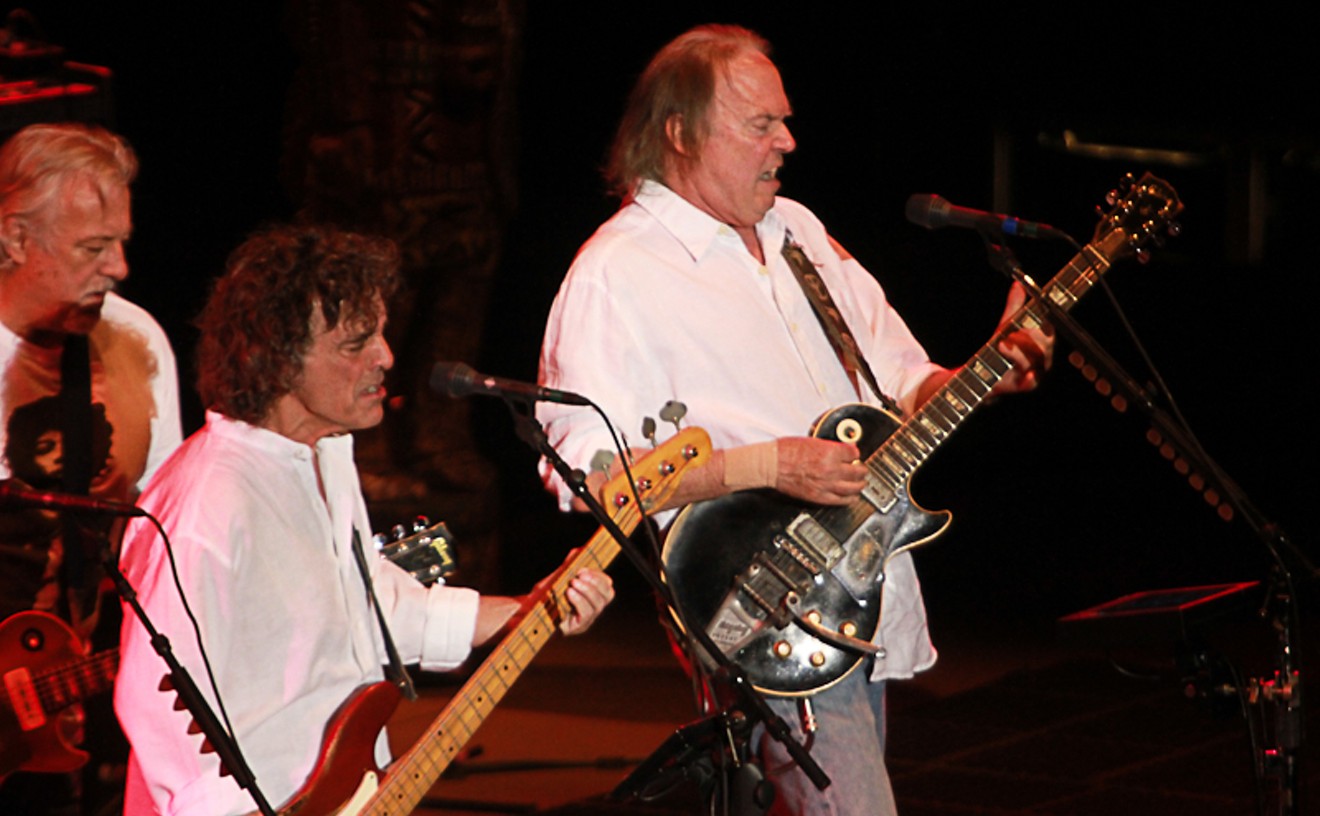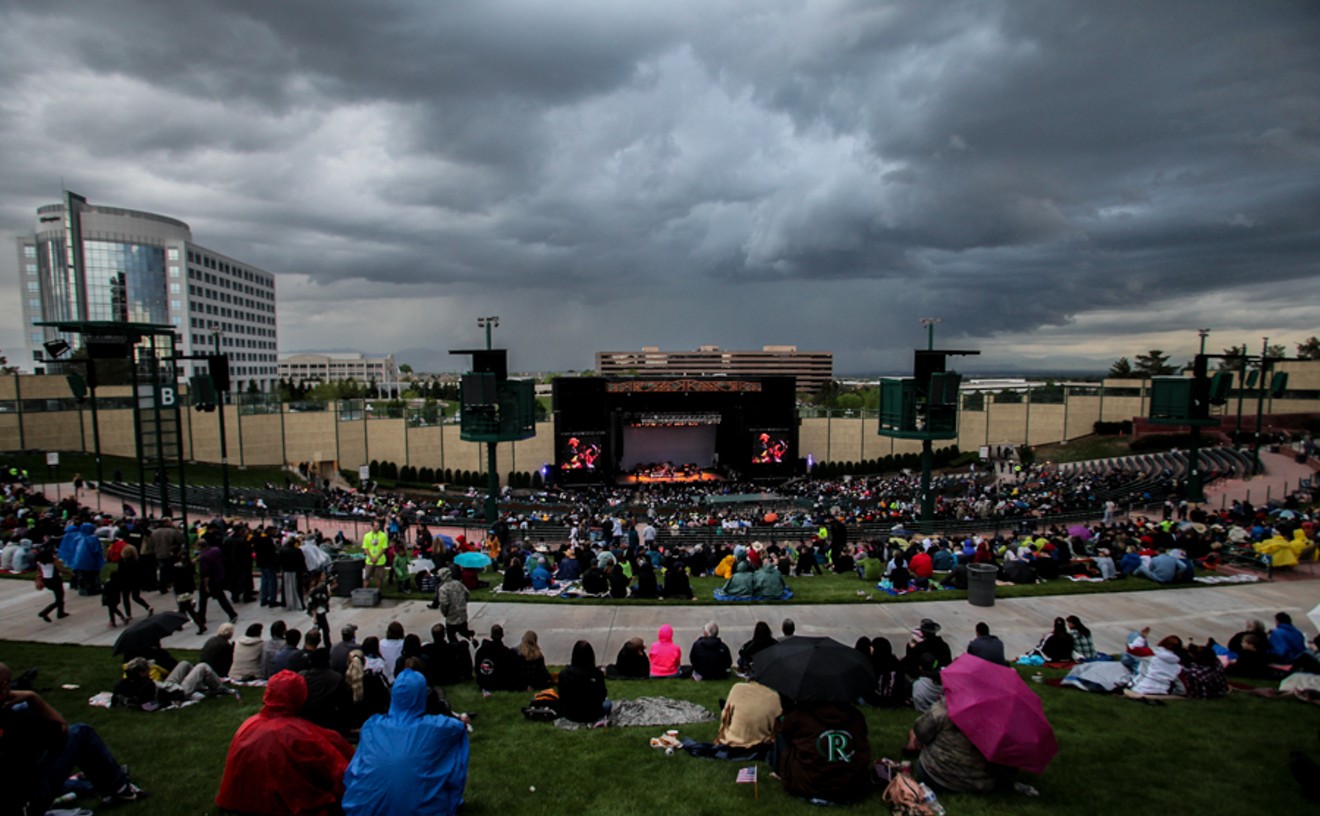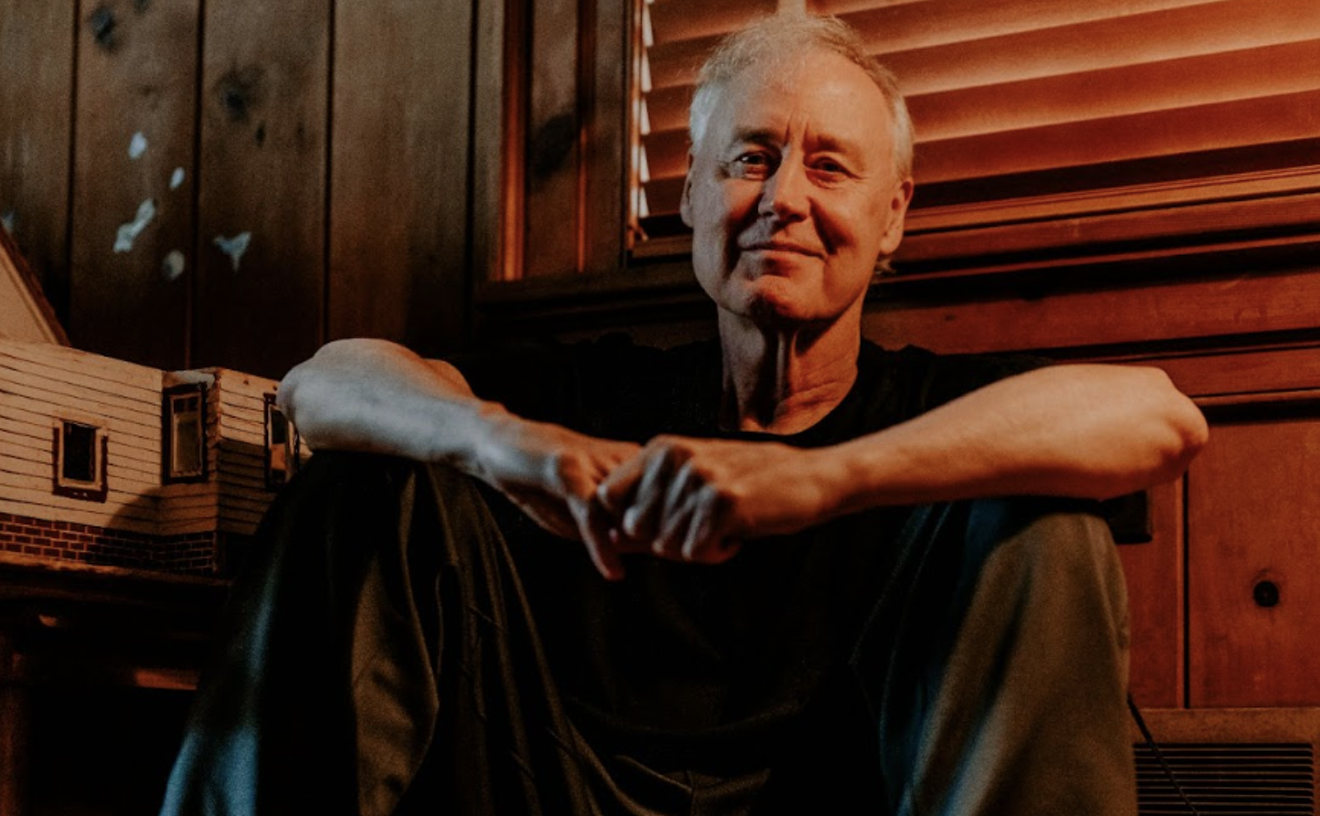"There's only one person named Herbie Hancock," he declares impatiently. "And if I don't express that, then what's my life worth?"
His career has certainly been worth a great deal: Hancock, who's a month shy of 62, is among the most gifted jazz instrumentalists to grace American music in the past forty years. But for him, that's not enough anymore. "My approach to music doesn't come from me being a certain type of musician, or a musician at all," he says. "It comes from me being a human being.
"Being a musician is what I do, but it's not what I am," he goes on. "And it's only one of the things I do. I'm a human being all the time, even when I sleep. But I'm not a musician when I sleep, and I'm not a musician when I eat, unless I'm paying attention to music or talking about music. And I don't always talk about music, and I don't always play music, and I don't always think about music. So I'm out of the box -- and understanding that has opened up my interests in the rest of the world. That interest was there before, but coming from the standpoint of being a human being, now I understand more clearly why it's important to watch CNN, for example, and to pay attention to the news and politics and social issues and cultures of other nations. And it's also made me aware that music isn't about music. Music is the tool to express life -- and all that makes a difference."
According to Hancock, that epiphany struck him about two years ago. But prior to it, his work certainly didn't lack vibrancy. As a sideman, he's perhaps best known for his crucial contributions to a series of mostly wonderful albums by trumpeter Miles Davis, highlighted by 1964's My Funny Valentine, 1966's Miles Smiles, 1969's In a Silent Way and 1970's Tribute to Jack Johnson. But the roster of other luminaries with whom he's collaborated over the years -- Sonny Rollins, Jackie McLean, Antonio Carlos Jobim, Quincy Jones, Stevie Wonder, Joni Mitchell, Mick Jagger and oodles more -- testifies to the high esteem in which he's held across any and all genres.
He's made a good number of worthy recordings under his own name as well. Because they often nodded in the direction of soul jazz and other popular modes (Hancock's "Watermelon Man" was a Top 40 hit for Mongo Santamaria in 1963), the recordings he turned out during his first decade in the public eye were sometimes dismissed as lightweight. But a listen to The Complete Blue Note Sixties Sessions, a 1998 boxed set, demonstrates how well most of his material has aged ("The World According to Herbie," January 21, 1999). Later, inspired by Davis, Hancock became a pioneer of jazz fusion via platters such as 1973's Head Hunters.
The fusion excursions that followed were spottier, but whenever Hancock turned his attention to more traditional jazz, he demonstrated that his chops hadn't atrophied in the slightest. On V.S.O.P. (1977), he joined with saxophonist Wayne Shorter, trumpeter Freddie Hubbard, bassist Ron Carter and drummer Tony Williams for an exceedingly successful all-star summit; ten years later, he won a well-deserved Oscar for the score he used in Round Midnight, one of the rare jazz-based films that feels unerringly true to the music.
Hancock has also turned heads outside the jazz universe, most notably with 1983's "Rockit." A single from the 1983 LP Future Shock, overseen by innovative producer Bill Laswell, the selection was received in many quarters as a novelty that would have been soon forgotten were it not for a clever video featuring a closet full of dancing suits that helped make it a left-field hit in the early days of MTV. But the song's use of scratching gave the mass audience an opportunity to hear what was then an underground technique, thereby opening doors to the mainstream for participants in DJ culture.
From time to time since then, Hancock has offered up other projects aimed at non-jazzers, including 1994's rap-flavored Dis Is Da Drum and 1995's New Standard, which found him surveying pop ditties by Peter Gabriel ("Mercy Street"), Prince ("Thieves in the Temple") and even Kurt Cobain ("All Apologies"). Afterward, he sent valentines to the rest of his fan base with 1998's Gershwin's World -- an obvious slab of Grammy bait that eventually earned two of the coveted trophies -- and the same year's Return of the Headhunters!, a watered-down version of earlier triumphs that seemed targeted at the contemporary-jazz crowd.
These discs weren't flops, but they didn't sell in huge numbers, either. So it was no surprise when Hancock subsequently founded his own label, Transparent, and reunited with Laswell, who'd been behind the boards for his biggest commercial triumph. But even though its handle is obviously intended to recall the Future Shock period, Future 2 Future is no "Rockit" rehash: Rather, it's an ambitious and adventurous collection of modern soundscapes that grew out of conversations Hancock had with Laswell about a series of subjects, only one of which was music.
"I wanted to find out about Bill's life and the issues he's concerned about," Hancock says. "What are his cares? What does he feel passionate about? Because I have certain things I feel very passionate about, and I don't want to just make albums with tunes anymore. I want to have a purpose.
"We talked for two hours about humanity, about political issues, about social issues, about art and its role. And then Bill said to me, 'You know, this area of music they call electronica -- did you know your work has been a big influence on a lot of the people who work in that area?' And I hardly knew anything about electronica. I thought maybe he was talking about 'Rockit' or Head Hunters. But he said, 'Not "Rockit," and not Head Hunters, either. Sextant.' I said, 'What?' Because Sextant was my first record for Columbia Records, and it was a very far-out, avant-garde jazz record that was done way back in the early '70s. So," he chuckles, "I didn't believe him."
He should have. Sextant, an excellent effort reissued a few years back on the Legacy/Columbia imprint, is frequently name-checked by electronica practitioners and jazz types with electro leanings, like Bugge Wesseltoft. Furthermore, "Nobu," a cut from the 1974 Hancock opus Dedication, is seen as an important precursor of the form -- hence its presence on Checkone: Applied Rhythm Technology, a mix compilation tracing the roots of the movement that also sports a thumper by rave royalty Carl Craig, a prominent guest on Future 2 Future.
Still, Hancock didn't react to this news by immersing himself in today's electronic music, "which is why I made the record I made," he says. "I couldn't have made it if I'd had too many external influences in the same area. It might have been somewhat derivative otherwise, and I'm not the kind of person who's satisfied with being derivative. And even if I'd tried not to do what other people were doing, it would have been reactionary. So by not doing it, I started out with a clean slate."
Laswell built upon Hancock's decision by tweaking the procedure they'd previously used together. "Usually, Bill likes to prepare something musically of his own, without me being in the studio with him," Hancock reveals. "Then he takes those tapes and plays them for me, and in the past, I would listen to what he prepared, and we'd start analyzing it, discussing it, picking out elements that could be a springboard for a melody or harmonic content or structure. And we could erase the whole thing if that's what I wanted.
"This time, though, he didn't do it that way," Hancock points out. "He did start off preparing things, but the first time I heard what he'd prepared, I was at a keyboard in the studio with the 'record' light on, which forced me to be totally right-brain. There was no time to analyze anything, because I didn't know what would come up next; I had to immediately respond and react, which is a rare way to do things. Even during the major avant-garde period of jazz in the late '60s and early '70s, the songs usually had melodies, some harmonic starting-off point, or something to unify a particular piece in the beginning. But in this case, Bill knew what the elements were, but I didn't, which made the situation pretty unique."
Even so, Hancock wasn't immediately sure this method would yield results. "The first time I overdubbed something, I thought it was nonsense, garbage," he admits. "I told Bill, 'Maybe we ought to do that again.' And Bill said, 'No, that's cool. I can use almost everything on that one.' And he could, because with the technological developments in music, there are all sorts of things you can do in production and post-production. You can expand, repeat, even change keys and do other things electronically to give certain elements and phrases more cohesiveness. It can seem random, but it can be used in a way that's not."
True enough: Future 2 Future holds together despite its quirky birth and a dizzyingly eclectic array of assistants that encompasses jazzbos (percussionist extraordinaire Jack DeJohnette), hip-hoppers (former X-Men member Rob Swift) and even a full-fledged diva (Chaka Khan), one of several featured vocalists. Not all of the latter are singers, however.
"When Bill and I started talking more specifically about the elements I might want for this record, I was thinking about what could set this record apart from other records I've done," Hancock recalls. "And I said to him, 'You know, most of my records have been instrumental. On very few have I' -- and I started to say, 'had singing.' But instead, I said, 'had the human voice.' Which is a whole other level of thinking."
Indeed it is. "Kebero, Part 1" mates a Miles-ian backdrop with the mesmerizing ululations of Ethiopian crooner GiGi; "The Essence" is a sophisticated ticket to clubland in the company of Khan, bassist Charnett Mofett and turntablist Grandmixer DXT; and "Tony Williams" layers poetry by Dana Bryant with rhythms by the late drummer, who died in 1997. As for "Wisdom," it's a portion of a Daisaku Ikeda lecture on chapters from The Lotus Sutra as recited by young Elenni Davis-Knight: "Simply put, knowledge corresponds to the past. It is technology. Wisdom is the future..."
"It's a statement," Hancock exults. "I mean, nobody has a statement on their record. But it's all part of the humanistic approach. Humanism amid the machines, you know?"
In general, critics have responded positively to these juxtapositions, but Hancock feels some of them haven't fully grasped what he was trying to accomplish on Future 2 Future. He gripes about one reviewer in particular, who described the disc as another entreaty to smooth-jazz aficionados. But in the next breath, he insists he's unfazed by those scribes who impugn his motives or suggest that he would have made a deeper mark in jazz had he been disciplined enough to focus on it to the exclusion of all else. "I don't fight that battle anymore," he snaps. "That's not my problem. It's theirs."
This wasn't always the case. "There was a period of time when I thought about those things," he acknowledges, showing more than a hint of irritation. "But I decided I was wasting my time, and I continued to do what I wanted to do. I have my own drummer to answer to."











